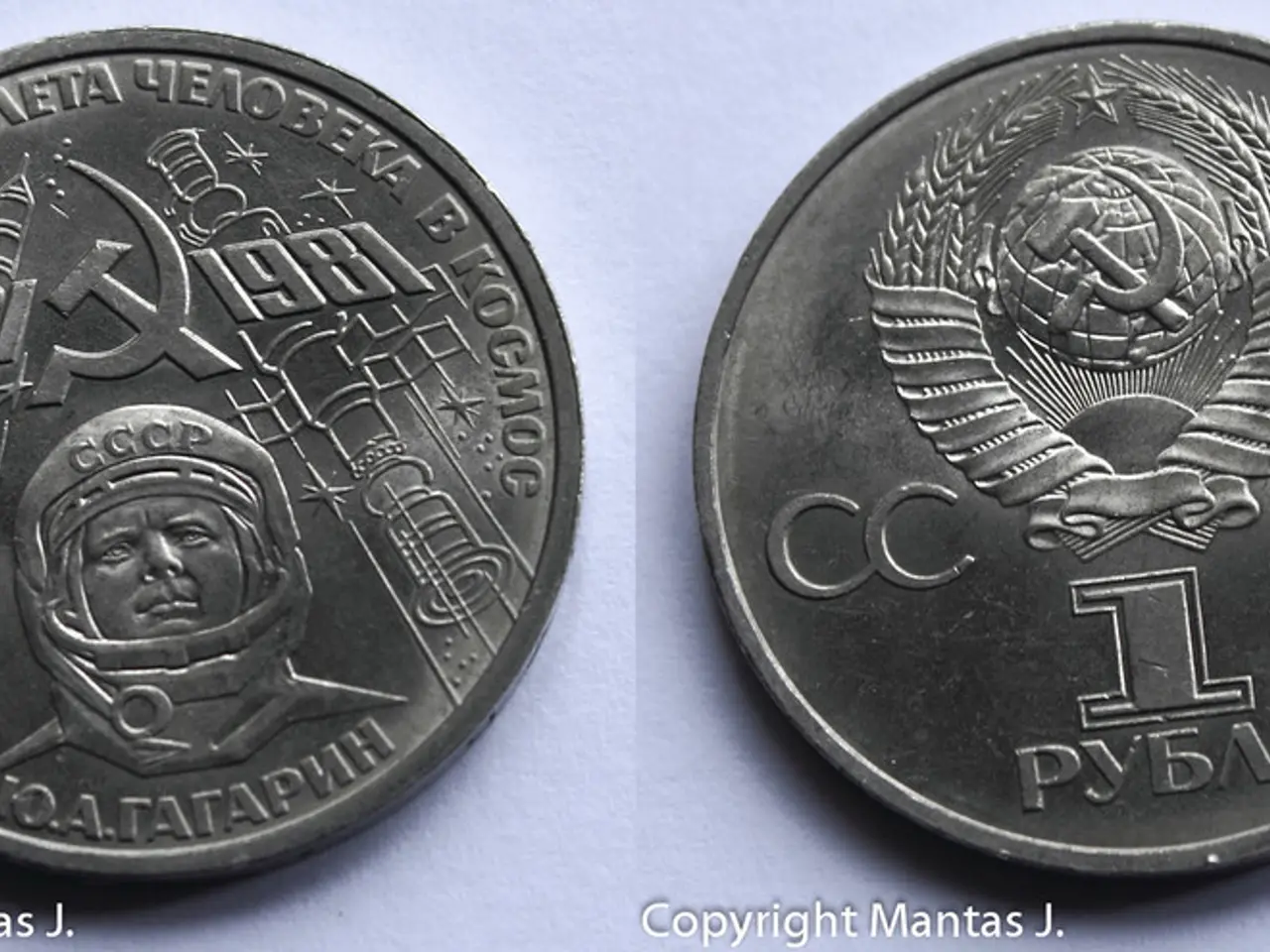Managers of reserves largely oppose the adoption of digital assets
In the ever-evolving world of international finance, the U.S. dollar's reign as the global reserve currency is facing challenges as countries seek alternatives in periods of instability. According to Harold James, Claude and Lore Kelly Professor in European Studies at Princeton University, this trend is particularly noticeable in today's environment.
One potential contender is the euro, which accounts for about 20% of global foreign exchange reserves. The European Union's economic size, strong central bank, and robust financial markets make the euro an attractive option. However, a unified treasury and bond market is currently lacking, limiting its appeal as a full dollar substitute.
Another contender is the Chinese renminbi, which has grown in international use since its inclusion in the IMF’s SDR basket in 2016, reaching around 2% of global reserves. Despite China's large economy and trade surplus, its global role is constrained by geopolitical tensions, capital controls, limited convertibility, and perceptions of non-transparency.
Gold, a traditional safe-haven asset, is also seeing increased use by central banks to diversify reserves amid uncertainties. While gold does not function like a currency, it hedges against volatility and currency risks.
The BRICS nations have discussed creating a new blockchain-based BRICS currency to challenge dollar dominance. However, experts argue that structural economic and monetary policy disparities make this unlikely to seriously dethrone the dollar soon.
Digital currencies, including CBDCs like China’s digital yuan (e-CNY) and the European digital euro, have gained traction as a way to modernize payments and reduce dependence on the U.S. dollar. Central banks actively explore these technologies, but the dollar remains dominant currently.
Despite these emerging alternatives, the U.S. dollar continues to dominate global reserves, accounting for roughly 60% globally. The dollar's position remains secure due to the size and stability of the U.S. economy, deep financial markets, and geopolitical leverage.
However, some diversification away from the dollar is occurring due to debt concerns, geopolitical tensions, and multipolar global economic shifts. Mark Sobel, US chair at OMFIF, suggests that while the administration's actions may erode the dollar's dominance, it is not going away soon.
Jesper Koll, global ambassador and expert director of Monex Group, Japan, believes that de-dollarisation presents an opportunity for Japan to move closer to the limelight. Pierpaolo Benigno, professor of monetary economics at the University of Bern, and Edoardo Reviglio, visiting senior research scholar at Yale Law School, suggest that Europe has a strategic opportunity to develop its own safe asset.
Aaron Hurd, senior portfolio manager at State Street Investment Management, suggests that lower returns and higher risk mark a change in dynamics for the US currency. Geoffrey Yu, senior EMEA markets strategist at BNY, states that the US will continue to hold the default status, and other currencies will have to earn their higher status.
Jens Søndergaard, currency analyst at Capital Group, believes that a weaker dollar amid US policy volatility is creating opportunities for other currencies, but there is no real alternative yet. Herbert Poenisch, senior research fellow at Zhejiang University, argues that discussions about de-dollarisation fall short when it comes to finding a credible replacement for the dollar in cross-border transactions.
In conclusion, while the U.S. dollar remains the dominant global reserve currency, alternative currencies such as the euro, Chinese renminbi, gold, a proposed BRICS currency, and digital currencies are gaining traction. The future of the global reserve currency landscape is uncertain, but one thing is clear: the dollar's position is not as secure as it once was.
Sources: 1. OMFIF's Global Public Investor series 2. OMFIF's Global Public Investor 2025 3. Yara Aziz, senior economist at OMFIF 4. Massimiliano Castelli, head of strategy and advice at UBS Asset Management 5. Michael Paulus, head of public sector banking, Asia, Alberto Torres, head of public sector banking, LATAM, Sunil Kaushik, head of precious metals solutions, APAC, Natalie Tsui and Tobias Cheung, public sector banking, Asia at Citi.
- In the realm of international finance, the dominance of the U.S. dollar as the global reserve currency is being tested with countries seeking alternatives during unstable periods.
- The euro, with a 20% share of global foreign exchange reserves, is a potential contender due to the European Union's large economy, strong central bank, and robust financial markets.
- The Chinese renminbi, growing in international use since its inclusion in the IMF’s SDR basket in 2016, is another candidate, but geopolitical tensions and economic factors limit its appeal.
- Gold, as a traditional safe-haven asset, is being increasingly used by central banks for diversifying reserves during uncertain times.
- The BRICS nations are considering a blockchain-based BRICS currency to challenge the dollar's dominance, but experts argue that structural disparities make it unlikely to seriously dethrone the dollar soon.
- Digital currencies like the Chinese digital yuan and the European digital euro are gaining traction as a means to modernize payments and minimize reliance on the U.S. dollar.
- Jens Søndergaard, currency analyst at Capital Group, suggests that the weaker dollar amid US policy volatility creates opportunities for other currencies, but there is currently no real alternative to the dollar.
- European economists Pierpaolo Benigno and Edoardo Reviglio believe that Europe has a strategic opportunity to develop its own safe asset, while de-dollarisation presents an opportunity for Japan to move closer to the limelight according to Jesper Koll.




